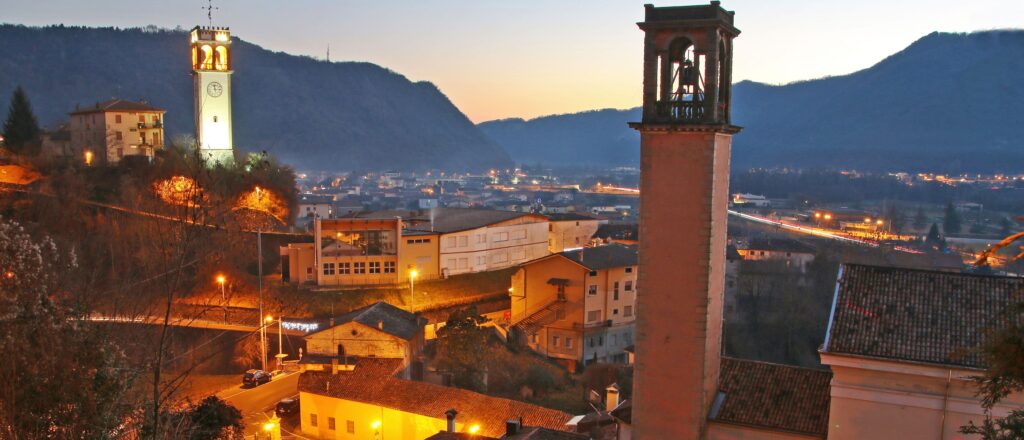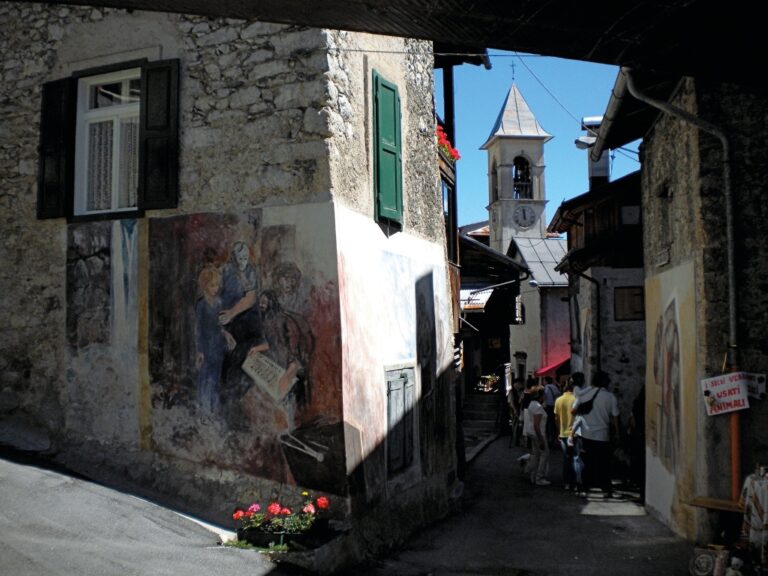Segusino, between history and curiosity
The toponym Segusino could derive from the city of Susa or, rather, from its inhabitants (still called “Segusini” today). There is a second hypothesis that recalls the word “securus” a safe and secure place, which is well suited to the environmental configuration. The town is mentioned for the first time in a document of 983, in which the bishop Rodolfo granted donations, including lands “in Secusino caxale unum”, to the monastery of Santi Felice and Fortunato, to compensate it for the damage caused by the Hungarian raids . For almost a thousand years Segusino has belonged to the diocese of Padua. In 1297 it was established as an autonomous parish, first depending on the parish church of S. Maria di Quero. The key place of Segusino was the castle of Mirabello, located in a strategic position on the border with Valdobbiadene. Today there is nothing left of the castle but some written evidence, including a parchment dating back to 1192. In 1358 Segusino was enfeoffed by the Counts of Collalto. Napoleon instead separated Segusino from Quero (BL) then belonging to the Treviso district and joined the Valdobbiadene district. Segusino was able to have full autonomy only with the annexation of Veneto to the Kingdom of Italy in 1866. An archaeological site has recently been discovered in the Segusinese mountains that testifies to the presence of man since ancient times. The tools found – used for hunting, cutting and woodworking – date the time back to Neanderthal man (80-35 thousand years ago). The center of Segusino, located in a pleasant foothill landscape, is pleasantly enriched by suggestive churches and oratories. The Parish Church of S. Lucia has been completely restored after the devastation suffered during the First World War. It is decorated in neo-Gothic style, and preserves inside, thanks to the recent recovery of the precious marble, the work of the architect Segusini, from 1855, an enchanting altar with Verona marble columns dedicated to the Madonna, an altar of the Pietà (Madonna addolorata), which was miraculously saved from the destruction of the First World War, and two paintings dedicated to the patron Saint Lucia – the work of painter prof. Sergio Favotto – made to celebrate the Jubilee of 2000, an organ of exquisite workmanship. Very little remains of the original building, dating back to 1259.
In Stramare there is the Church of San Valentino, flanked in the suggestive square by a fountain made from a single piece of stone, coming from the Val di Non. Before the “discovery” of San Valentino as the protector of lovers, popular piety was addressed to the saint for deliverance from epilepsy. In Milies, the church dedicated to Mary Help of Christians, the pride of the Alpini Group. Not to be forgotten is the small church of Santo Stefano, rebuilt as an “opera de ròdol” after the Second World War, and the very ancient Church of Santi Gervasio and Protasio, formerly the site of a hermitage which is remembered every year on the occasion of the Romit (of the Hermit). Very curious is the Oratory of S. Barnaba, called the “ceseta del Diolet”, the little church of the Devil, because the altarpiece depicts a little devil sitting at the feet of St. Barnabas. The bell tower, built after the First World War that stands in the center of the town, has become its symbol. Curious is the legend that sees the woods around Segusino always inhabited by the Mažarol, a kind of spiteful elf with goat hands and feet, a red dress and a pointed hat – an image very similar to the traditional one of the devil – who hides among trees, waiting to torment passers-by to make them deviate from the right path. Since 1982 Segusino has been twinned with Chipilo (Puebla State – Mexico), a town founded in 1882 by emigrants mainly from Segusino and from the Piave Valley, where even today – after 120 years – the low Bellunese variant of the Venetian dialect is still spoken, as well as in Segusino. As evidence of the spoken identity, the book was published in 1994 by a group of entrepreneurs from Segusino. “The Venetian dialect of Segusino and Chipilo: phonology, grammar, Italian-Spanish dialect lexicon” by the American anthropologist Carolyn Mac Kay, which contains over 4,000 dialect words, commonly used in the two countries. The second edition of the book has just been published on the initiative of the Emigrants Community of Segusino and with the decisive contribution of the Municipality of Segusino and the Veneto Region. The new reprint has been updated with 2000 new words and the lexicon has also been enriched by the English translation.
Source: Altamarca Association




